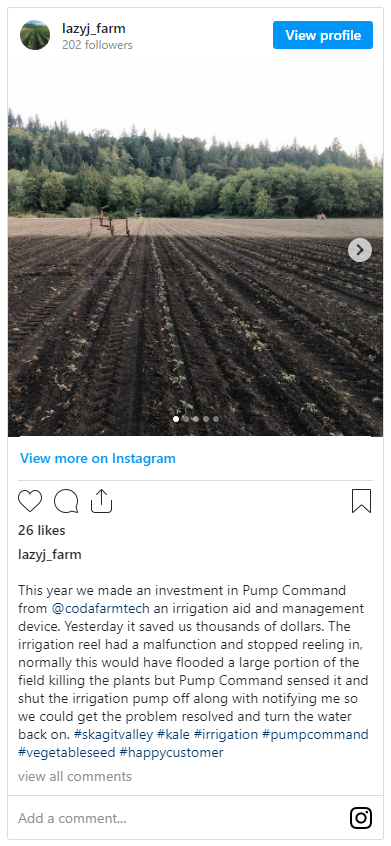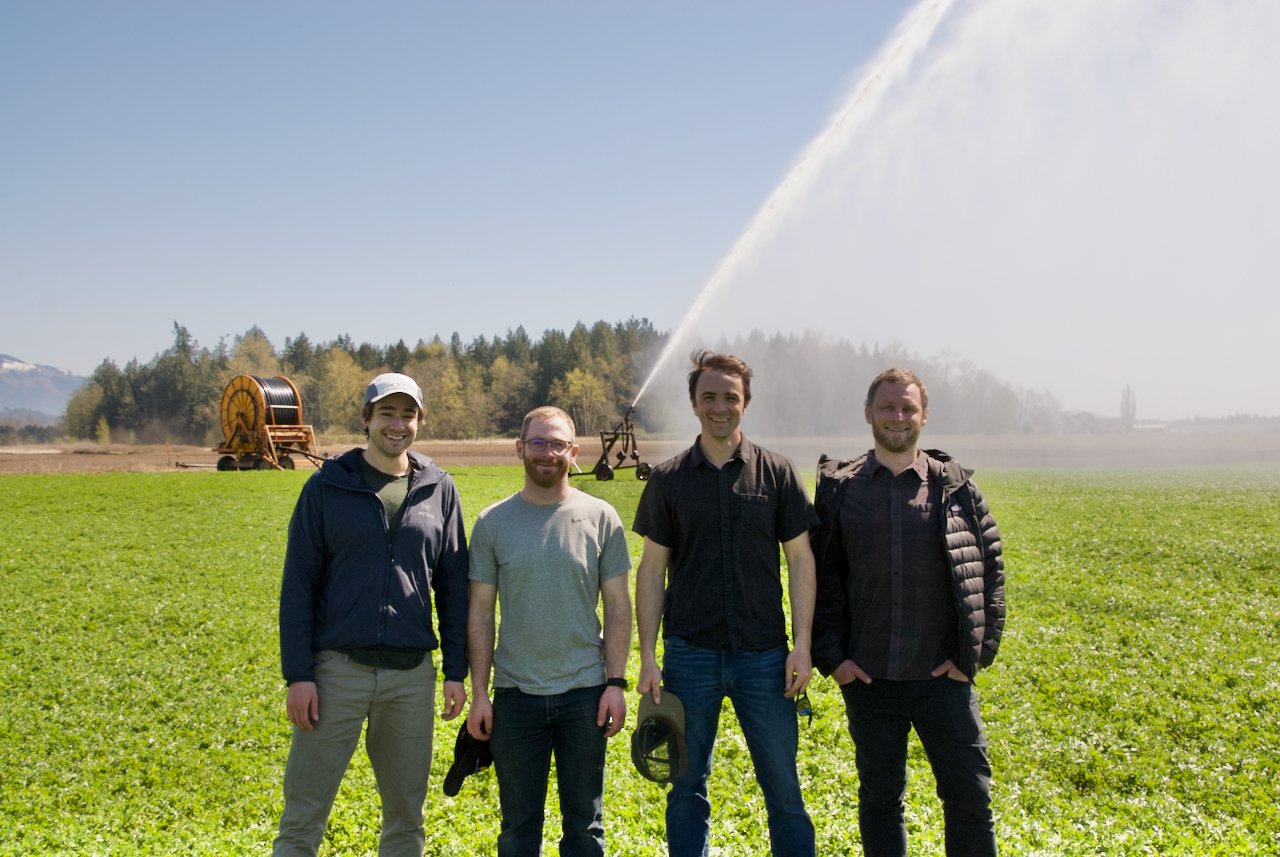
Big news for our mission to save water, protect crops, and make farmers’ lives easier.
By David Wallace, CEO
As we kick off 2022, I wanted to share some big and exciting news for our mission to save water, protect crops, and make farmers’ lives easier.
First, I want to tell you a story about my Grampa.
One of my earliest memories of my family’s farm in Washington State is riding around in my Grampa’s pickup truck while he did routine checks on our crop. I remember arriving early one morning at a field about ten miles from the farm shop, when Grampa spotted a burst irrigation pipe that had clearly been gushing water throughout the night, leaving a large pond of water between us and the diesel-powered water pump that continued to draw hundreds of gallons of water per minute from a nearby well. Grampa sprinted through deep mud and standing water to shut down the pump – all the while voicing his frustration with some salty language that most would deem unsuitable for my nine year-old ears.
But Grampa’s frustration was well-founded. Had the problem with our irrigation equipment been identified quickly, this simple mistake could have been easily fixed without much effort or damage. Instead, the error went unnoticed for hours on end, creating a difficult morning of messy work, wasting thousands of gallons of water, and ruining a large area of the valuable potato crop.
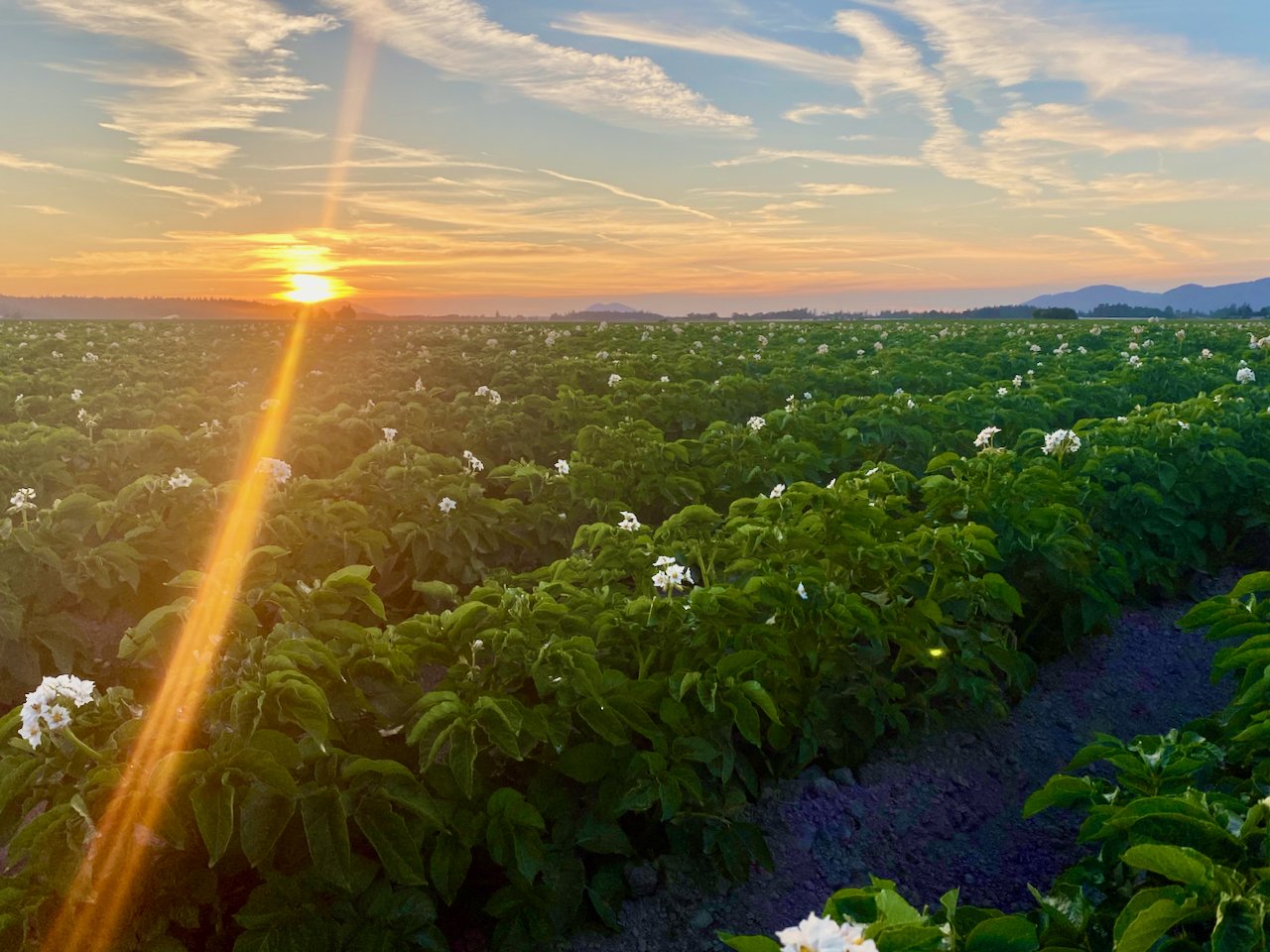
Irrigation problems like the one my Grampa faced on that morning back in the late 90’s remain common today. Much of the world’s farm irrigation equipment still lacks the type of control, automation, and remote monitoring that could have prevented the problem my Grampa dealt with.
When I returned to the farm as an adult after five years as a chemistry researcher at Johns Hopkins University and another four years as a data and machine learning scientist at Amazon, this was a shocking realization. While our planting and harvesting technology has received countless high-tech upgrades, in the last 20 years the irrigation technology available for our farm hasn’t changed much.
So in January 2019, when my dad – who inherited the farm, along with the irrigation issues, from my Grampa – asked if I could find a solution to some of the farm’s most pressing water problems, I jumped at the opportunity to explore what I assumed would be a wide variety of potential off-the-shelf solutions.
But it quickly became clear that no such solutions were available. We couldn’t upgrade our farm’s already existing equipment without a full, expensive replacement and overhaul – and maybe that wouldn’t even work. So, my brother Connor and I, drawing on our experiences in farming, software development, and hardware prototyping, set out to build the tool our farm needed from scratch.
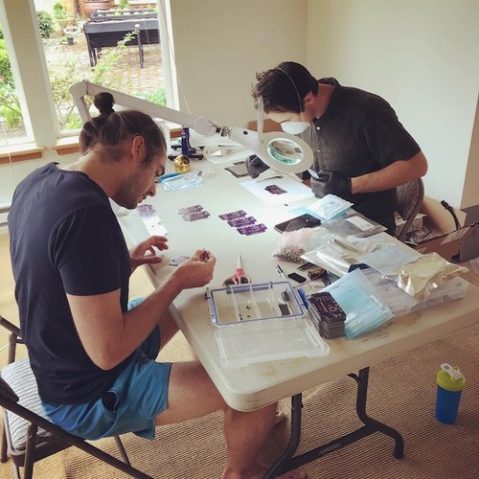
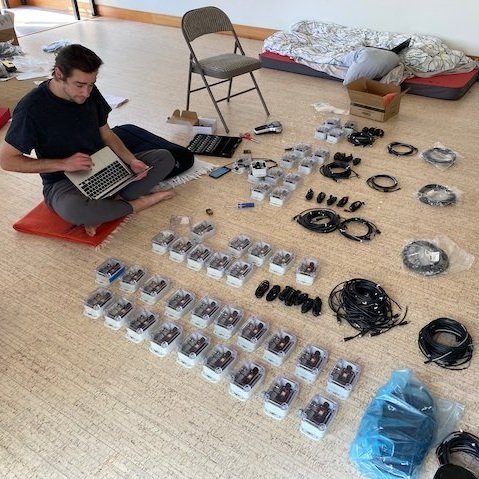
Over the next few months in 2019, with the help of my brother, dad, and cousin, we built ten working prototypes and coded the cloud infrastructure for a remote monitoring and control system that we could use to retrofit the irrigation equipment on our farm. We installed the prototypes on four of our farm’s hard hose irrigation reels, three diesel-powered water pumps, and three electric water pumps. We then tested the system under a variety of different conditions throughout the growing season, providing a constant stream of feedback that we used to improve the devices and the code on an almost daily basis.
The features we built in those early days were simple: the system would automatically shut down the water pump when the sprinkler stopped moving, we could see the sprinkler’s status and location on a web page, and we would get a text message if anything went wrong. Seeing these features work in the field on a daily basis was incredibly gratifying and exciting, and the positive impact that the system made on the crop was clear.
By the end of that first trial season, everyone involved agreed: this thing worked, and we needed the system on all of our irrigation equipment for the next season, and we were pretty sure that other farmers needed it, too. That’s when our company, CODA Farm Technologies, and our FarmHQ platform for irrigation, was born.
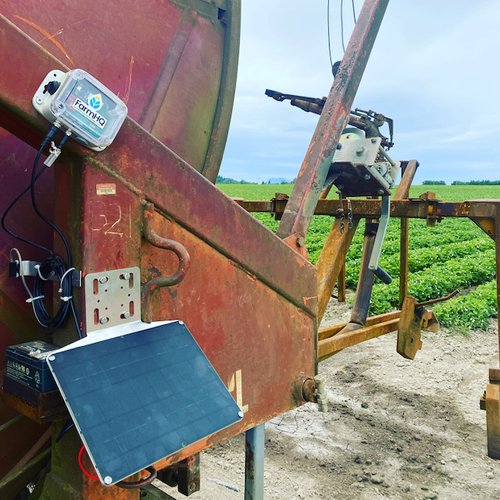
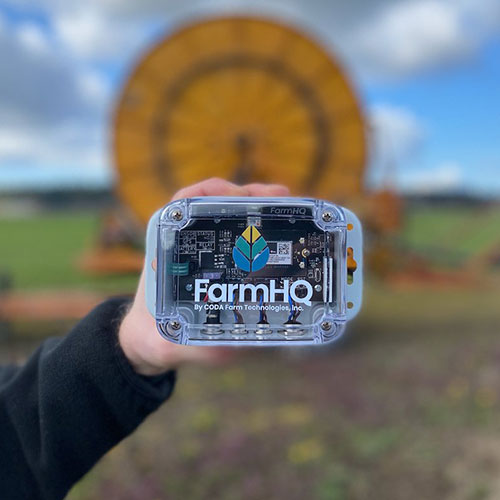
We first began offering FarmHQ to a few local farmers in 2020, a kind of local BETA launch. Since getting customers outside of our own family farm, we have been refining every aspect of our product in response to customer requests, making frequent trips to our customers’ fields, and working late into the night to get new features deployed for the following morning. We’ve also been working hard to meet growing demand, often taking sales calls in the field and assembling FarmHQ devices by hand to fulfill new orders.
We now have more FarmHQ devices deployed across eight different states and provinces in the U.S. and Canada. We also continue to see the growing impact of our technology: In the 2021 irrigation season, our devices monitored over 16,500 irrigated acres, saved approximately 21,000,000 gallons of water, and prevented countless accidental flooding events that would have caused costly damage to our customers’ crops.
Feedback from our customers has been overwhelmingly positive, and many have seen a clear and quick return on their investment through improved yields and less wasted time, fuel, and water. Take Lazy J Farms, one of our customers in Washington State:
“This year we made an investment in [FarmHQ] from @codafarmtech an irrigation aid and management device. Yesterday it saved us thousands of dollars. The irrigation reel had a malfunction and stopped reeling in, normally this would have flooded a large portion of the field killing the plants but [FarmHQ] sensed it and shut the irrigation pump off along with notifying me so we could get the problem resolved and turn the water back on. #skagitvalley #kale #irrigation #vegetableseed #happycustomer”
-@lazyj_farm on Instagram
Because of stories like this, we wrapped up the 2021 irrigation season excited about the future of our company and eager to bring our technology to more farmers.
In addition to struggling with outdated irrigation equipment that often lacks remote monitoring and control, less than one-third of America’s farmers say they use quantitative data to make irrigation decisions. Instead, they are forced to rely on qualitative information like the visible condition of their crop, the feel of the soil, their personal and farm schedules, and neighboring farms’ irrigation decisions. While these traditional methods can be effective, they require the farmer to painstakingly inspect each crop on a daily basis.
With drought conditions on the rise throughout much of the American West, the stakes are higher than ever: U.S. farms use 70-90 percent of the world’s fresh water supply, and up to 50 percent of that water is wasted. As farmers continue to farm more acreage with fewer hands and less water, the need for a more scalable and efficient methodology grows ever more urgent.
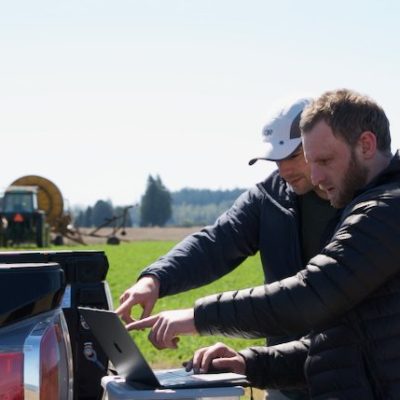
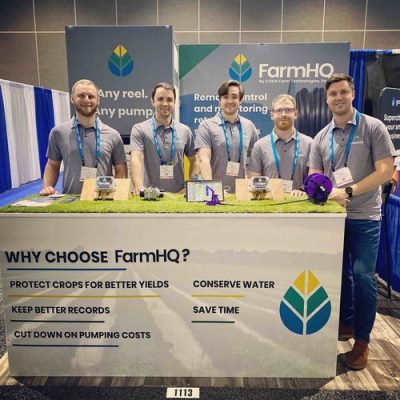
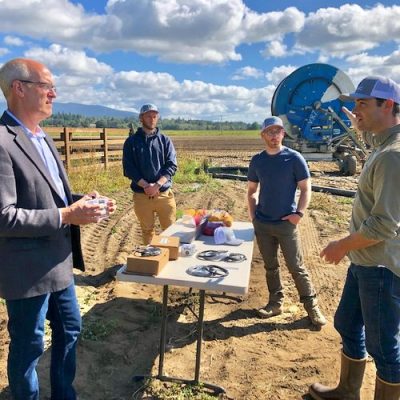
Fortunately, it’s a challenge we are even better positioned today to help address: we recently received $2.2 million in a seed financing round led by Lowercarbon Capital, with Voyager Capital, Arnold Venture Group and Will Canine, Co-Founder of Opentrons Labworks Inc., as the other major participants. We are grateful to this experienced group of investors who share our vision and believe in the power of our technology to conserve water, protect crops, and make farmers’ lives and businesses better.
Kristin Ellis, Partner at Lowercarbon Capital said:
“We couldn’t be more excited to be supporting CODA Farm Technologies in their quest to save water and improve the lives of hardworking farmers. FarmHQ is an effective climate technology that isn’t science fiction – it’s already having an obvious positive impact on our planet, with the potential to save billions of gallons of precious fresh water every year.”
This new funding will allow us to do three things that are critical to growing our company and impact:
- Dramatically scale up production of our FarmHQ devices ahead of and during the 2022 irrigation season to meet the growing demand from farmers in North America;
- Expand our product offerings to new applications and customers around the world; and
- Invest in research and development of data-driven irrigation technologies to boost yields and improve water efficiency.
As we look at our roadmap for 2022, we are focused on continuing to improve our product, grow our team, and get ready for a busy irrigation season. We could not be more excited for the path ahead.
